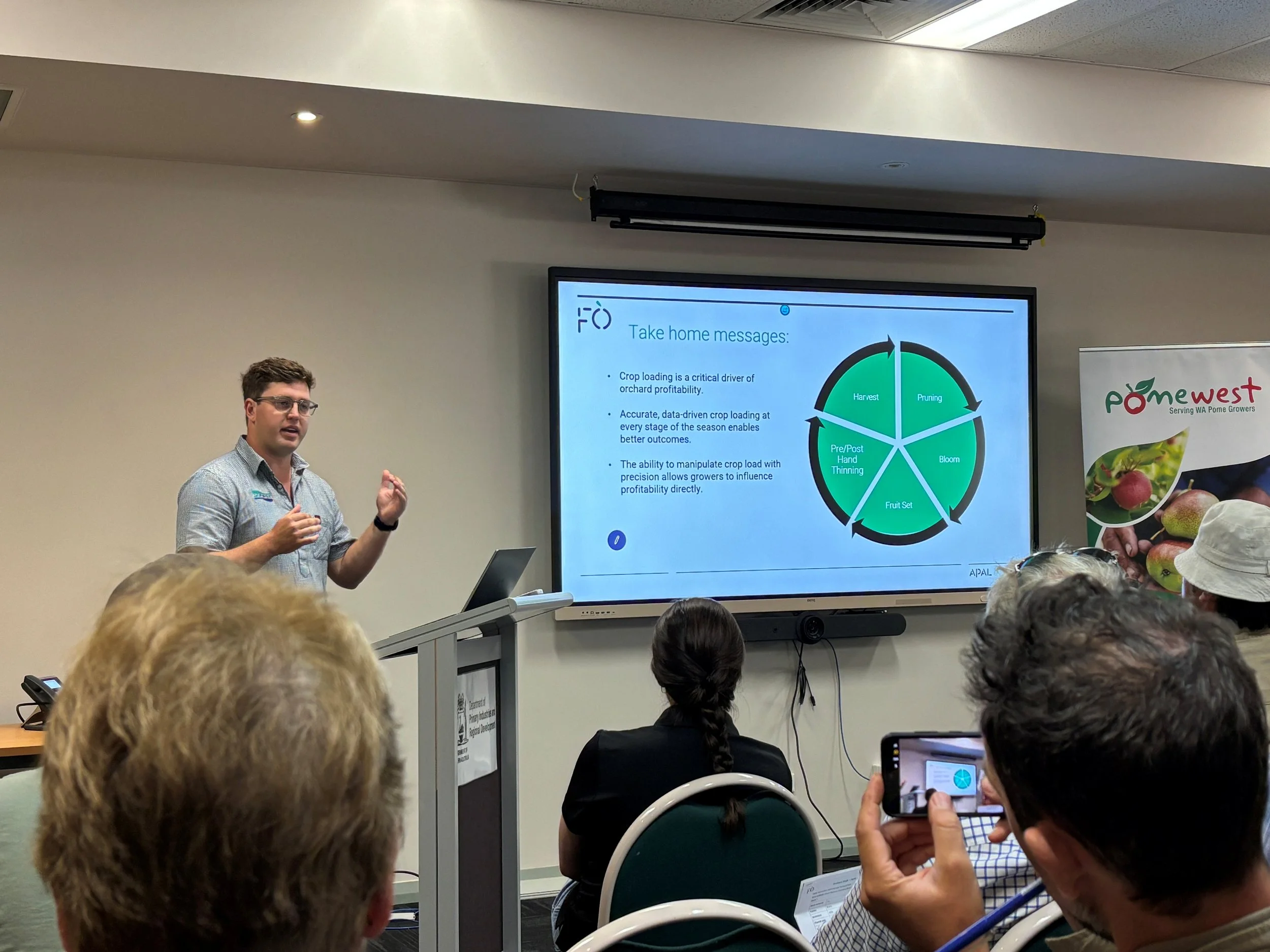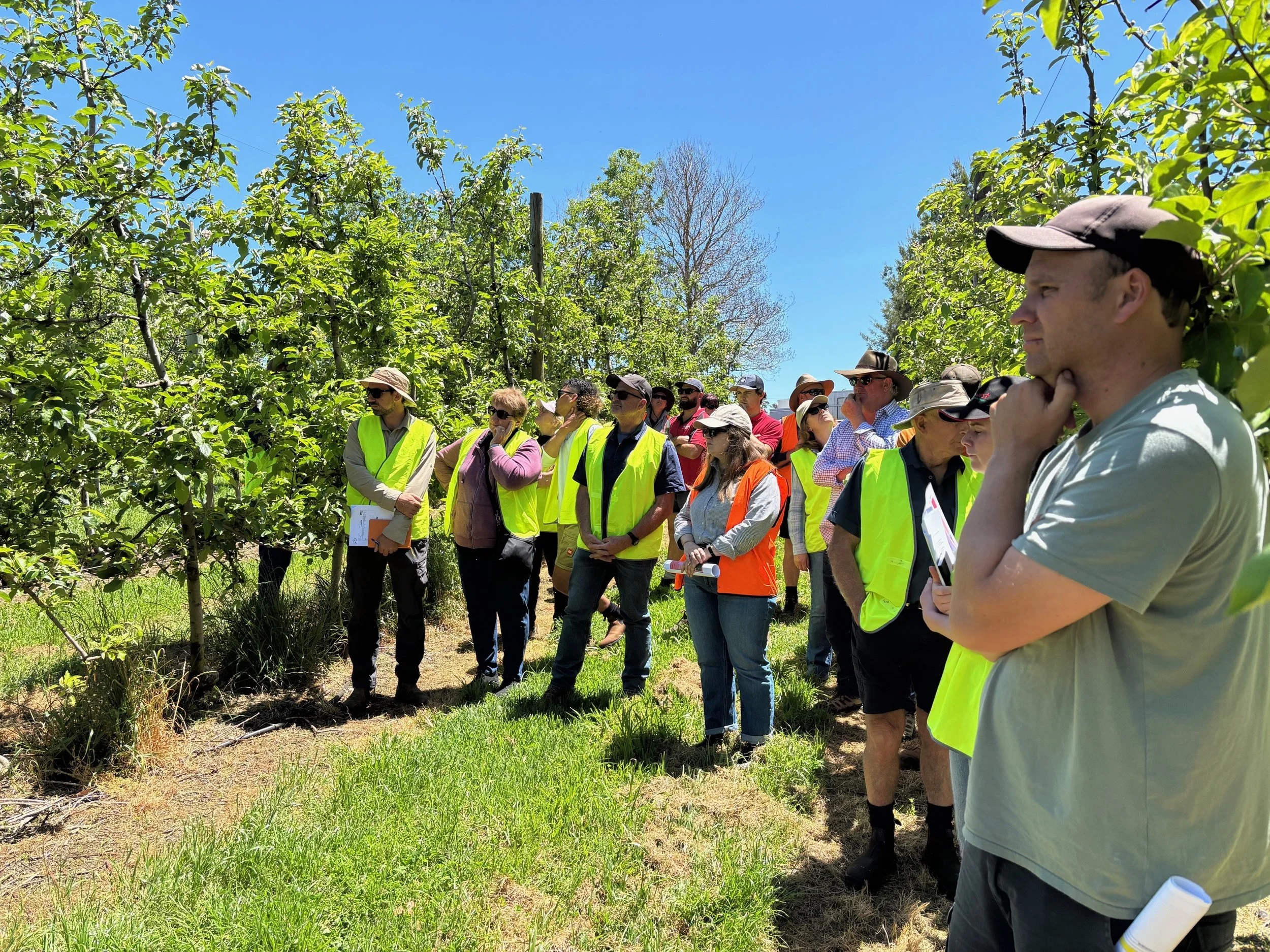Spring Future Orchards Walk – November 25
Special Guest Speaker Sarah Grantmeir shiring research on thinning
We had an excellent turnout for the Spring Future Orchards Walk, with 30 growers joining us for an informative and engaging day in the orchard. A big thank you to host grower Shaun Bamess for opening his orchard and hosting the herbicide trial.
Insights from Europe: Mechanical Fruit Thinning
Our guest speaker, Sarah Gruntmeir from Kompetenzzentrum Obstbau Bodensee (KOB), shared her research on thinning apple fruit using the BMV mechanical fruit thinner. This innovative tool features:
A shaft powered by a hydraulic motor with adjustable rotation speed and impact.
Flexible mounting options (front or rear of tractor) and joystick control with console display.
Bars grouped in threes for effective thinning.
Trials tested various vibration and rotation speeds (430, 390 & 500 VPM at 12, 16 & 18 RPM) at 2.2 km/hr. Results showed 3–7% fruit damage per tree, with the goal of reducing crop load early for better return bloom while minimizing risk. The device was most effective when fruit were sized 30-35mm. Sarah also highlighted thinning options for organic growers in the EU, including lime sulfur, Darwin spindle, hand thinning, and the BMV THF 800. Even modest reductions in crop load can significantly cut hand-thinning costs. She noted that training systems and cultivars influence thinning success.
Looking Ahead: Technology in Orchard Management
Sarah introduced emerging light-based devices that measure fruit on trees and predict drop rates. In the future, these non-destructive tools could assess internal fruit properties such as sugars, acids, and water content in-field, opening doors for precision orchard management.
Jack Wilson speaking about decision making based on counting and accountability
Creating a Culture of Accountability
Next, Jack Wilson from AgFirst spoke on the value of counting and accountability in decision making. Relying on gut instinct can lead to surprises, while data driven approaches improve outcomes. Jack emphasised:
The 3 P’s: Production, Packout, and Price.
Understanding crop loading for your variety and canopy structure—what, why, and how.
The role of precision and early actions on carbohydrate efficiency.
Balancing data vs. instinct for better labour use and profitability.
Leveraging technology and tools, including block scorecards, to track performance.
Key Takeaways:
Mechanical thinning shows promise for reducing crop load and labour costs.
Technology is transforming orchard management, from thinning to fruit quality prediction.
Accountability and data-driven decisions are critical for profitability and sustainability.
Thank you to all who attended and contributed to this successful event.
Bamess Orchard featured this walk



